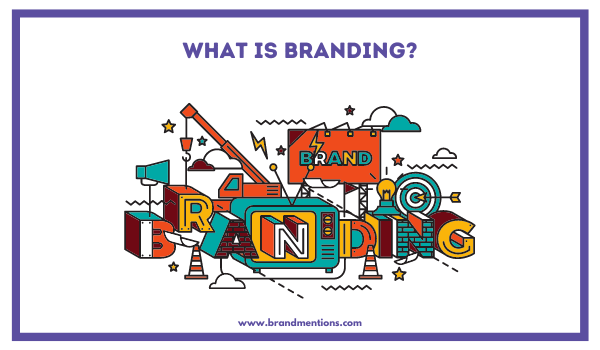Types of Branding
The 10 types of Branding are:
1. Personal Branding
2. Corporate Branding
3. Product Branding
4. Service Branding
5. Retail Branding
6. Cultural Branding
7. Online Branding
8. Offline Branding
9. Co-Branding
10. No-Brand Branding

What is Branding?
Branding is the process of creating a strong, positive perception of a company/organization, its product lines, or services in the customer’s mind by combining elements such as logo, design, mission statement, and a consistent theme throughout all marketing communications. Correct branding makes the company or organization easily recognizable, with a positive status in the market.
Of course, different types of branding strategies are effective for various types of businesses. Identifying the proper brand strategy for your company is the best way to start a successful branding process.
Securing your brand identity, creating strong brand values, and being consistent with your brand positioning actions go hand in hand to make your brand instantly recognizable.

What Are the 10 Types of Branding?
Personal Branding - the process of creating an identity for yourself as an individual or business. Whether you are looking to elevate your business or just to position yourself as an authority in your industry, this type of branding can help you land new clients and generate a fanbase. Anyone can benefit from personal branding, not only Elon Musk.
Corporate Branding - refers to the process of promoting a brand name or entity name in order to assure its positive positioning in the market, brand equity, and maximum brand recognition. It is a very complex process, structured around the company's values, brand guidelines, target audiences, and target market. Corporate branding is the most common type of branding. Product Branding - entails creating a new identity for a company's product. It is a very specific type of branding since it is directly tied to the characteristics of the products and what sets them apart from other similar products. This means giving your product a distinct look, tone of voice, and even personality to ensure its commercial success.
Service Branding - is a strategy in which a provider markets its services, as a professionally unique product, aimed to optimize reach and sales. This type of branding is value-based and aimed to build long-lasting relationships with customers. Using value propositions alongside marketing essentials, a provider sets itself apart in the market by positioning itself as a professional service supplier who adds value to its customer base.
Retail Branding - is a marketing process in which a retailer's stores become its products, which can then be uniquely marketed to optimize brand awareness, reach, and sales. It is very common in retail branding that the company uses the brand extension strategy to introduce new products with an existing and established brand name. For example, in the grocery industry sector, a brand can introduce over-the-counter products which are different from food items. By doing this, retail stores provide a vaster experience for their customers, in every company store they enter.
Cultural Branding - often referred to as geographic branding, is the process of promoting a specific region or values of that region to the public. Themed venues, hotels, or restaurants use cultural branding. The Eiffel Tower is a brand itself because it has been used as a cultural symbol by many businesses. From t-shirts to keychains, coffee shops, and hotels, the former gateway to the Paris World's Fair has become the symbol of Paris, the love city.
Online Branding - consists of creating a social media identity, promoting the brand on social media platforms, and consistently tending to its online audience. Online branding is the best way to bring in new prospects through content marketing, user-oriented web design, and clever landing pages. It is also one of the easiest ways to increase brand loyalty with marketing campaigns and quality customer engagement strategies.
Offline Branding - refers to any type of branding strategy that does not use the internet. It basically uses the classical marketing channels like radio, TV, banners, flyers, and direct calls. This type of branding isn’t at all that much different from online branding, since its purpose is to promote a certain brand/company or even an event. Activist branding is actually using offline branding a lot, since it needs to be out on the street, next to the people it wants to reach.
Co-Branding - involves the participation of at least two companies. It is a marketing approach involving many company names on a product or service, bringing together the best in both brand identities. They bring to the table their logos, slogans, and customer base in order to expand their market share, and increase their individual branding efforts.
No-Brand Branding - also known as minimalist branding, is the strategy of reducing or renouncing the branding elements in order to draw attention to the product. Companies market their products as non-branded, presenting the benefits of not having to pay for the costs of the branding. This itself is a conscious branding strategy that could work for some companies, and could miserably fail for others.
It may look like there are too many kinds of branding but the truth is, knowing which marketing strategy to implement means knowing who your brand is and how it can secure itself a place at the table. To start understanding where your brand stands, you first need to perform your own brand audit.